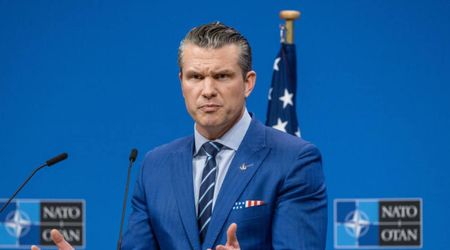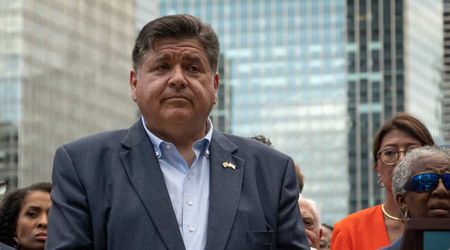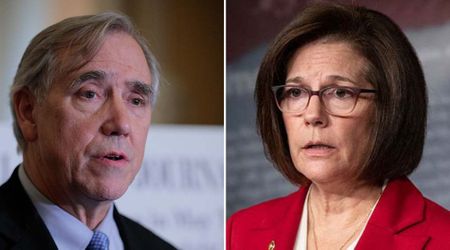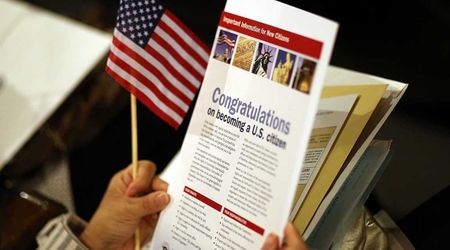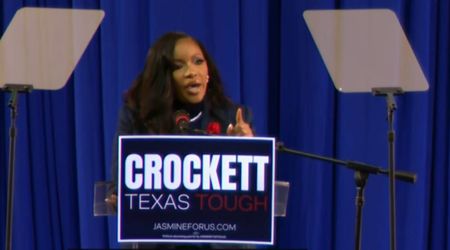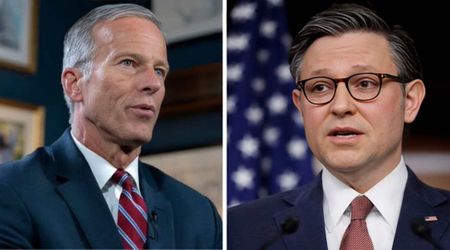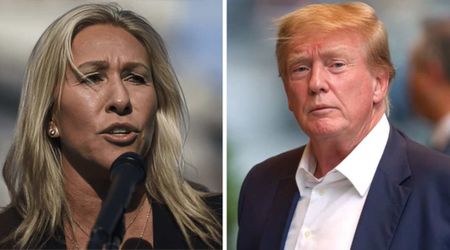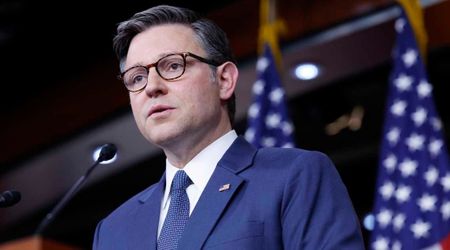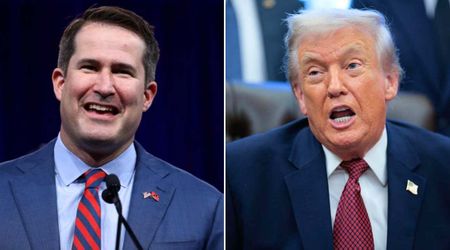Karoline Leavitt blasted as she flaunts $4.8K Louis Vuitton bag: 'She did not buy an American bag?'

WASHINGTON, DC: White House Press Secretary Karoline Leavitt is currently catching heat for a very fashion-forward yet not-so-patriotic accessory: a $4,800 Louis Vuitton bag.
Leavitt has been championing American-made products alongside President Donald Trump’s new tariff-heavy game plan.
White House Press Secretary Karoline Leavitt shows off her $4,800 Louis Vuitton bag pic.twitter.com/Wh1KGZp39r
— PatriotTakes 🇺🇸 (@patriottakes) April 6, 2025
Karoline Leavitt under fire for flaunting Louis Vuitton bag
It all started when a political account on X (formerly Twitter) dropped a not-so-casual elevator selfie of Karoline Leavitt rocking a crisp white Louis Vuitton Monogram Messenger bag.
The post also came with a screenshot from the Louis Vuitton site showing the same bag, including the price tag, the Irish Star reported.
Naturally, those on the other side of the political aisle were not going to let this slide.
"Look, she just wanted to get one before it gets sprayed with a tariff. Leave the poor woman alone. Just kidding about the leaving her alone part," one posted on X.
Look, she just wanted to get one before it gets sprayed with a tariff. Leave the poor woman alone.
— Coby Chase (@cobychase) April 6, 2025
Just kidding about the leaving her alone part.
"Is that patriotic? FRENCH HANDBAGS??" a second user asked.
"What? She did not buy an American bag?" another wondered.
"Wow, she totally represents the average American," someone else sarcastically added.
"And their supporters, who probably don’t have belongings adding up to that value in their entire home, will eat it up," read a comment.
And their supporters, who probably don’t have belongings adding up to that value in their entire home, will eat it up.
— Jonathan Cage (@Jonathan_Cage10) April 6, 2025
"It used to be bad taste to flaunt opulence that came at the expense of the taxpaying people," another chimed in.
It used to be bad taste to flaunt opulence that came at the expense of the taxpaying people.
— Joel Keith (@MayNotBeJoking) April 6, 2025
The handbag drama comes on the heels of Trump’s so-called 'Liberation Day', when he announced a slew of tariffs that are supposed to boost American manufacturing and discourage imports.
During an April 3 appearance on NewsNation’s Morning in America, Leavitt passionately defended Trump’s plan. "There’s not going to be any pain for American-owned companies and American workers because their jobs are going to come back home,” she told the outlet, selling the tariffs as a golden ticket to "price stability" and higher wages.

Donald Trump’s tariff playbook
For years, Donald Trump’s been all about using tariffs as a weapon to fight back against what he calls economic bullying by other countries. The logic is that if Americans have to pay more for imported goods, they’ll start buying more Made-in-USA products.
He argues that these tariffs will push consumers toward domestic goods, increase tax revenue, and attract investment back into the US. He’s also made it clear he believes the US has been "pillaged" by foreign countries and "cheated" in trade for decades.
Earlier in his presidency, Trump slapped tariffs on China, Mexico, and Canada, claiming they weren’t doing enough to curb illegal immigration and drug trafficking. And he’s not backing down now, even as pushback mounts.
Not everyone in the GOP is loving the tariff game. Ben Shapiro, the co-founder of Daily Wire and a long-time Trump ally, called the tariff plan potentially "economically catastrophic" and blasted the "muddled messaging" behind it.
What's the deal with 'reciprocal tariffs'?
On April 5, Donald Trump dropped a minimum 10% tariff on all imports to the US. This includes goods from major trading partners like the UK, Argentina, Australia, Brazil, and Saudi Arabia.
But on April 9, he went after 60 other countries with much steeper tariffs: 49% on Cambodian imports, 46% on Vietnamese goods, and 20% on EU products.
China got the worst of it. Originally facing a combined 54% tariff, they refused to back down. In response, Trump doubled down and raised the tariff to 104%. China had previously slapped 34% retaliatory tariffs on US products and declared it would "fight to the end."
Now, the White House is calling these tariffs "reciprocal"—implying they’re matching what other countries charge the US. But it seems that’s not always the case.
In reality, these tariffs were calculated based on what would be needed to wipe out the trade deficit with each country. Some nations—like the UK, which actually buys more from the US than it sells—still got slapped with the baseline fee, the BBC reported.
This article contains remarks made on the Internet by individual people and organizations. MEAWW cannot confirm them independently and does not support claims or opinions being made online.

